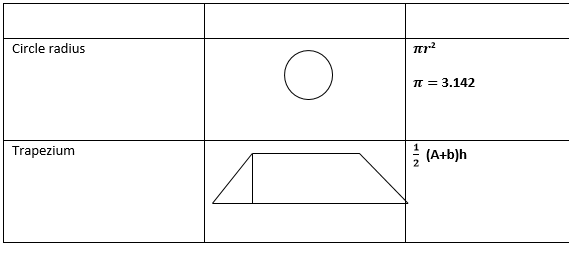MEANING OF FARM SURVEYING
Farm surveying is defined as the process by which measurement of land is made on the farm.
Such measurement by tables, plans or layout are done for specific purposes. It can also mean the measuring and mapping out of the position, size and boundaries of an area of farm land.
Importance of Farm Survey and Planning in Agriculture
SOME COMMON SURVEYING EQUIPMENT/INSTRUMENTS
Some common surveying equipment or instrument include
Ranging poles
Function/Uses:
Gutter’s Chain
Precautions that should be Taken when chaining a farmland.
Functions/Use: It is used in taking short or detailed measurement of length and breadth.
Measuring Tapes
Description: (i) it is usually made of linen or fine steel sheet. (ii) It is usually marked on one side with metric units and the other side with the imperial unit. (iii) The tape is of various types and lengths. (iv) The tape is normally wound in a small case from where it is unwound for use.
Function/Use
It is used for taking measurement of length, breadth and height.
Arrows or Pins
Description: (i) These are thin pointed steel wires of about 30cm long with one end curved into a ring. (ii) A red cloth is normally attached to the ring so that it can be seen from afar.
Function/Uses: (i) It is used during chaining for making off chain lengths as measured. (ii) It can also be used for marking stations.
Offset Staff
Description: (i) this is a graduated rod-3m long. (ii) A hook may be fitted at the top for the purpose of pulling a chain through a hedge. (iii) Each telescopic link is 0.3m (30cm) in length.
Function/Use: (i) it is used for taking short offset measurements.
Beacon or Pillar
Description: (i) it is made of rectangular block usually in concrete form. (ii) Marks are usually inscribed on top of the block. (iii) The beacons are always buried in the ground with marked head raised a little above the ground.
Function/Uses: (i) It is used for marking off points measured. (ii) It is also used for the recognition of the measured or surveyed area.
General Maintenance of Surveying Instruments
MEANING AND IMPORTANCE OF FARM PLANNING
Farm planning is a drawing or outline of a farmstead. It also involves the proper land use planning, i.e., putting the land into use for which it is best suited without the risk of land degradation.
Importance of Farm Planning
FACTORS NECESSARY FOR PLANNING A FARMSTEAD
Definition of a farmstead: Farmstead can be defined as a farm house and all its production and processing structures. A farmstead is both a home and a production centre. In other words, a farm stead is the farmer’s dwelling place and production centre. Its planning is based on the system of farm, and on the need and comfort of the farmer’s family.
Factors Influencing the Siting of Farms or Farmstead.
In planning a farmstead, the following factors must be considered.
Reasons for Planning a Farmstead
PRINCIPLES OF FARMSTEAD LAYOUT
Some specific principles are required for farmstead layout and these include:
CALCULATION OF AREA OF FARMLAND AND PLANT POPULATION
The shape and size of any farmland can be measured or determined by farm surveying. The area of farmland varies; some are rectangular, square, triangular or even circular in shape. The formula used in the calculation of farmlands and plant population include:
Area of Farmland = Length x Width (metres)2
i.e (L x W)m2
(b) Number of plant stand/plant population
This refers to the number of plants in an area of farmland. Mathematically,
Plant population = Area of farmland (m2)
Spacing (m2)
(c) Spacing: This is the distance between one crop plant and the next plant which is usually between and within the rows, e.g., 60cm x 30;-100cm x 75cm, etc.
(d) Note: one hectare = 10,000m2. This figure means there are 10,000m2 in one hectare of are of farmland is given in hectare.
(e) Measuring the Area of Farmland: The shape and size of my farmland can be measured or determined by farm surveying. They are of farmland varies a already noted above.
Formulae for calculation the area of farmland are shown below.


Example 1: if the length and width of a farmland are 60m x 30m respectively, and the spacing of a tomato crop plant is 30cm x 30cm, calculate (a) the area of the farmland; (b) the plant population (tomato) in the give area; (c) the total population if there are two plants per stand.

Shape of a farm Land
SOLUTION
(a) Area of farmland = Length x Width
= 60m x 30m = 1800m2
(b) Spacing of crop = 30cm x 30cm or 0.3m x 0.3m
Area of 1 stand of crop=0.3m x 0.3m = 0.09m2
No of stand/crop = Area of farmland(m2) = 1800m2 = 180,000
Spacing (m) 0.09m2 9
= 20,000 crop stands
The plant population (tomato) is 20,00 stands.
(c) since there are two plants per stand the total plant population = 20,000 x 2 = 40,00 tomato plants
The total population= 40, 000 tomato plants.
Example 2: A school farm in Lagos State was surveyed and presented in a map as shown in the diagram below. Use it to answer the following questions.

Solution
Area of farmland = (BD + AF) x h
But first find or calculate h, using Pythagoras theorem
h(BC)2 = AB2– AC2 = 302 – 152 900-225 = 675cm.
h(BC) = = 25.9m = 26m. (Approx)
Area of farmland = (40 + 70) x 26
= (110) x 26
= x 2, 860 = 1, 430m2
Area of farmland = 1,430m2
= = = 286 pineapple plants
Pineapple plants available in the farm = 286-23 = 263.
Final pineapple plants remaining = 263
Questions:
Read our disclaimer.
AD: Take Free online baptism course: Preachi.com 